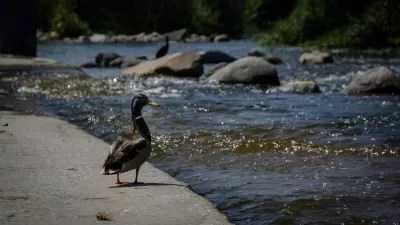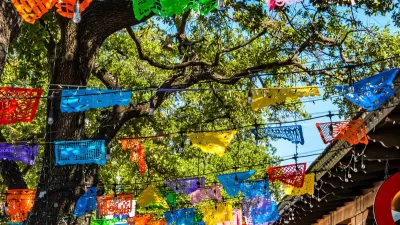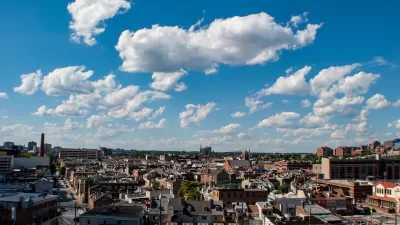As excitement around the L.A. River revitalization heats up, neighbors of the once-neglected channel wonder who will benefit from the billion-dollar redevelopment.
Even partial restoration of the Los Angeles River has been promised to yield a bounty of benefits in the areas of public health, water conservation, and urban placemaking. But a piece in The Nation suggests that communities who lived near the channel through its less glamorous days may never reap those benefits.
The article explores what it calls "the striking alignments of interest among the mayor, the River Corp., and the city's power elite with regard to the project," noting the seeming conflicts of interest in the non-profit implementing the restoration plan, as well what looks like city cooperation with wealthy developers in buying, selling, and rezoning properties in the increasingly desirable area:
"[T]he fear of many current residents [is] that because real-estate interests have been free to speculate and exert influence without adequate public oversight, the very people who fought for open spaces in their neighborhoods along the river—among the least wealthy and least healthy in LA, and with the fewest public parks—may not be able to afford to stick around long enough to enjoy them."
Is there any chance that the influx of money around the river will reach existing river communities? Perhaps: The city has considered designating the area as a new type of district, where tax revenues would be dedicated to infrastructure improvements and community-based projects.
Community faith in the river's coming "rebirth" hardly improved with the news that architect Frank Gehry would conduct the restoration. Some viewed that decision—which wasn’t made public for nearly a year—as a betrayal to years of community work; activist Lewis MacAdams called it "the epitome of wrong-ended planning."
Kreitner's piece weaves these threads into a suggestive narrative that places fears surrounding the river project in the context of other casualties of L.A.'s relentless march toward progress—Chavez Ravine, Chinatown, Bunker Hill—and employs an informative cast ranging from local leaders and community members to St. Francis of Assisi and Mary Pickford.
FULL STORY: Will the Los Angeles River Become a Playground for the Rich?

Planetizen Federal Action Tracker
A weekly monitor of how Trump’s orders and actions are impacting planners and planning in America.

Congressman Proposes Bill to Rename DC Metro “Trump Train”
The Make Autorail Great Again Act would withhold federal funding to the system until the Washington Metropolitan Area Transit Authority (WMATA), rebrands as the Washington Metropolitan Authority for Greater Access (WMAGA).

DARTSpace Platform Streamlines Dallas TOD Application Process
The Dallas transit agency hopes a shorter permitting timeline will boost transit-oriented development around rail stations.

Renters Now Outnumber Homeowners in Over 200 US Suburbs
High housing costs in city centers and the new-found flexibility offered by remote work are pushing more renters to suburban areas.

The Tiny, Adorable $7,000 Car Turning Japan Onto EVs
The single seat Mibot charges from a regular plug as quickly as an iPad, and is about half the price of an average EV.

Supreme Court Ruling in Pipeline Case Guts Federal Environmental Law
The decision limits the scope of a federal law that mandates extensive environmental impact reviews of energy, infrastructure, and transportation projects.
Urban Design for Planners 1: Software Tools
This six-course series explores essential urban design concepts using open source software and equips planners with the tools they need to participate fully in the urban design process.
Planning for Universal Design
Learn the tools for implementing Universal Design in planning regulations.
Municipality of Princeton
Roanoke Valley-Alleghany Regional Commission
City of Mt Shasta
City of Camden Redevelopment Agency
City of Astoria
Transportation Research & Education Center (TREC) at Portland State University
US High Speed Rail Association
City of Camden Redevelopment Agency
Municipality of Princeton (NJ)





























